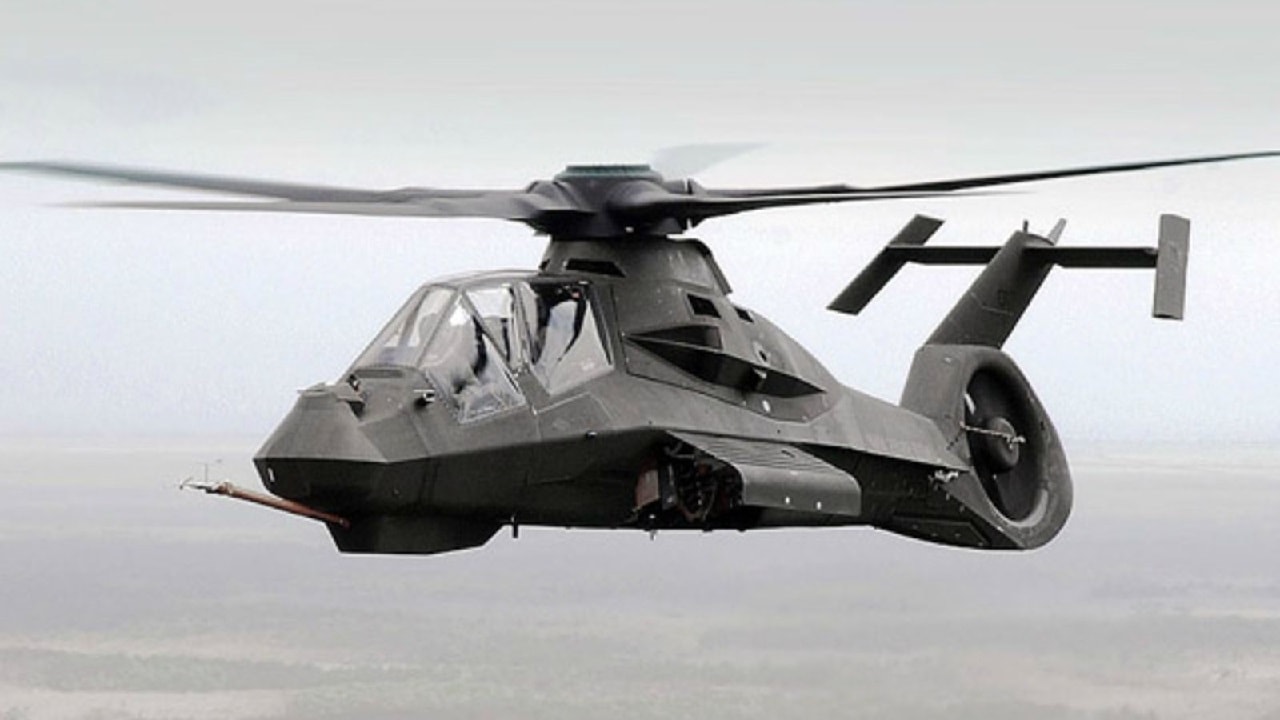In the modern combat aviation world, stealth is the name of the game. In order to be considered a fifth-gen fighter such as the F-35, J-20, or Su-57, an aircraft must have some stealth capabilities.
Advances in radar, infrared (IR), and electro-optical (EO) detection have pushed the limits of stealth design, requiring ever more sophisticated technologies to defeat these sensors.
This push has been difficult enough for fixed-wing aircraft. When it comes to helicopters, the challenges are magnified.
Stealth Characteristics
Building a stealthy aircraft requires several different considerations. The most basic is the visual/audio component. Changes in shape, paint material, and color, and noise reduction techniques such as placing the engine on top of the aircraft to use the fuselage to reduce audio signature from below all help prevent the aircraft from being detected by observers.
The remaining challenges all come from electro-magnetic sensing. Radar systems use returns to sketch out the size, shape, speed, direction, and altitude of aircraft. IR sensors detect the high heat in the exhaust of turbine or jet engines. EO sensors are basically very, very sensitive eyes, able to detect the slightest shift in light, say the difference between a dark aircraft against a bright sky.
To combat these sensing systems, modern stealth aircraft deploy an array of capabilities. In form, they use rounded edges and integrated wings, v-tails, and internal weapons bays to reduce the surfaces and angles which may provide a radar return. Even the most sensitive radar array is rendered useless when most of its signals bounce off in a harmless direction instead of being returned for analysis.
The radar-absorbent coating is not a new invention, first being used on the periscopes of German submarines during the Second World War, however, advances have made it far more effective. The material on F-22s and F-35s actually traps, which convert some of the radar waves, preventing the return to the receiver at all. When combined with unique shapes, this greatly reduces the return of the aircraft.
Stealth and Helicopters
Nearly all the strategies described above become difficult to impossible when it comes to helicopters. With the exception of radar-absorbent coating, the very nature of helicopters makes it incredibly difficult to incorporate stealth strategies.
While some parts of a helicopter may be rounded off to reduce radar returns, the rotor assembly itself cannot be modified, nor can the rotors – which serve as a helicopter’s “wings” – be integrated into its body. Its engines are often mounted atop the fuselage however the noise of the rotors themselves and the low level at which helicopters often operate renders ineffective any noise reduction this may achieve. These same engines are often turbine engines which produce a high amount of heat for IR sensors.
In light of these challenges, it is prudent to ask whether it is worth it to invest the time and energy to try and produce a stealth helicopter. The mission sets for helicopters – attack, mobility, and logistics support – often belie a need for stealth. In the case of logistics and mobility, air superiority is most likely assured, rendering stealth tech dispensable.
While attack helicopters may gain some benefits from reduced radar cross-sections during ingress and egress, their very mission leaves them vulnerable to ground attack. No amount of stealth material will help against making a low-level attack run against an entrenched enemy.
There may be some applicability for special operations, such as the 2011 raid that killed Osama Bin Laden however it seems unlikely that stealth helicopters will ever see widespread use.
Maya Carlin, a Senior Editor for 19FortyFive, is an analyst with the Center for Security Policy and a former Anna Sobol Levy Fellow at IDC Herzliya in Israel. She has by-lines in many publications, including The National Interest, Jerusalem Post, and Times of Israel. You can follow her on Twitter: @MayaCarlin.

